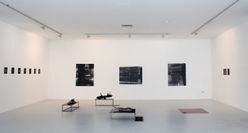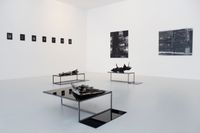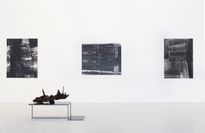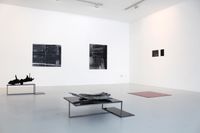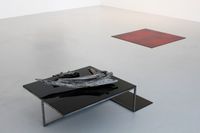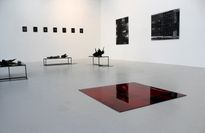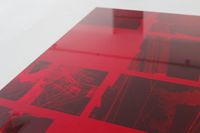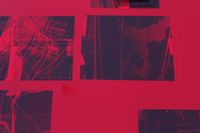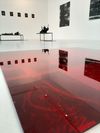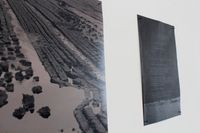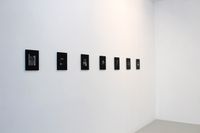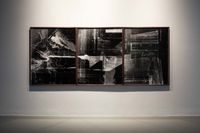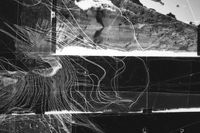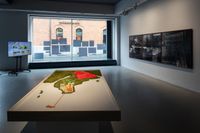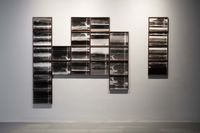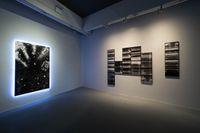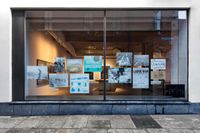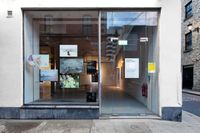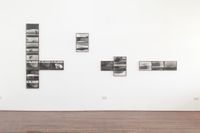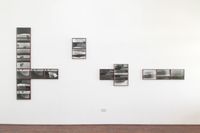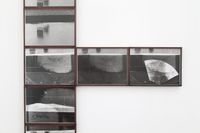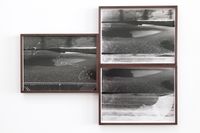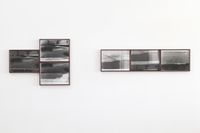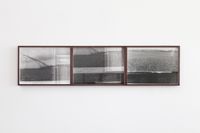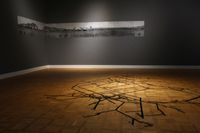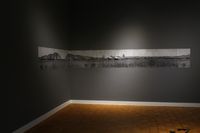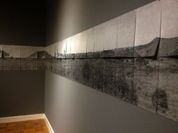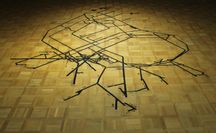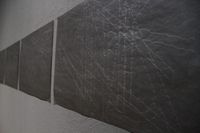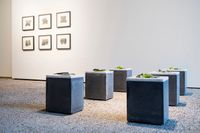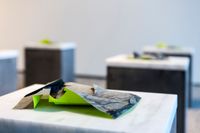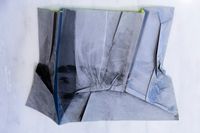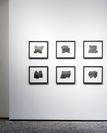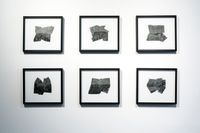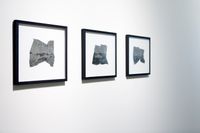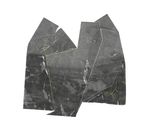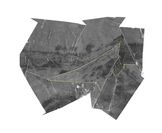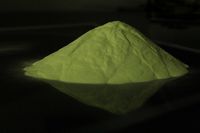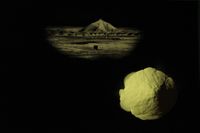Catriona Leahy
Please click on the thumbnails to view images in full size.
Metabolic Rift, Leitrim Sculpture Centre, 2021 (A result of the Landscape, Ecology & Environment Research Residency)
The Landscape, Ecology, Environment Research Residencies is a new programming strand developed at Leitrim Sculpture Centre in 2020 that will offer up to 5 residency placements each year until 2024. The scheme provides artists working in contemporary visual arts with the space, time and support for the research and development of new engagements with landscape, ecology and/or environmental contexts and themes and to develop from this work, new directions, approaches and methodologies within their own practice.
Agitition Co-op, Temple Bar Gallery & Studio, Dublin, 2021
Agitation Co-op is an exhibition that investigates the subject of landscape from a range of vantage points; not only social and political ideologies but also, mapping and topography. The exhibition includes artworks by Michele Horrigan, Catriona Leahy, Laurie Robins, and Libita Sibungu.
The four artists survey areas of geographical unsettlement that span continents and hemispheres of the globe. Taking only a diagrammatic view of the surface level illustrates present-day activity: boundaries and borders, the division of urban and rural, and ways in which mankind has imposed itself on the landscape through industry and habitat destruction. The artists in this exhibition, through their individual practices, uncover faults in the terrain, exposing previously obscured subterranean narratives from throughout history that link the processes of natural resource extraction and industrialisation to their effects on the environment, and surrounding communities. In an Irish context, this relates to historical colonial rule and fragmentation of the landscape, and how these issues are echoed by a systemic market venture from the Irish Government over recent decades. Taking an international viewpoint these fissures are strained further by the global economy, the threat of war and mass displacement of populations. The seemingly disparate landscapes in this exhibition, both local and international, are connected below the surface, kept out of view by global power systems, but are unearthed by investigatory and determined artistic practices.
How the land lies, 2020, Sirius Arts Centre, Cork, 2020
The word landscape has deep-rooted traditions and associations to formal composition, aesthetics and “the pictorial” within the context of art history. Referring to the visible world, its generic meaning suggests a unified perspective where the role of the spectator is central. The body and its orientation in space serves as a medium for the reception and interpretation of landscape and provides the comforting limits to an otherwise daunting, limitless vista – both spatial and temporal. This anthropocentric viewpoint reinforces the origins of the word; derived from the Dutch word landschap, landscape literally means the shaping of the land by people. It is this problematic meaning that underpins much of the work and research of the five participating artists in this exhibition.
Together, their work suggests that what we see is not what is there – the land lies and therefore merits a closer reading, interpretation and metaphorical excavation. Each artist uses a variety of approaches that problematise established notions of landscape - be it natural, built or imagined - revealing hidden or latent features inscribed within. Through their work they offer a range of perspectives on how we experience, perceive and interpret our landscapes of the future as well as its cumulative and contested past.
Guided by the question of how to re-imagine landscape in a time of ecological crisis the deliberately fragmented images in this body of work, Faultlines, created through the manipulation and collaging of photographic negatives, explores landscapes that are deemed redundant and subsequently repurposed for economic and ideological purposes. Photographs are taken on 120mm B/W film using a medium format camera. The negatives are subsequently cut and collaged back together again such that the landscape appears fragmented and dislocated. The sellotape’s edges are literally exposed to reveal what look like cracks, fissures or ruptures in the landscape.
Suspended Temporality, Cmine, Genk, Belgium, 2014
This work was created during a 3-month residency at FLACC Workplace for Visual Artists in Genk, Belgium. It responds to the anthropogenic landscape of Genk, a former coal mining town. During my time there I looked to the lasting impact of the recent industrial past, and the legacy the mining heritage had and continues to have on Genk’s landscape. What remains of this industrial heartland provided a contextual backdrop for the work. The mining impact made a lasting impression on the contours of the landscape, manifested most obviously as spoil heaps or slag heaps. These sudden obtrusions appeared incongruous against the otherwise flat homogeneous landscape and represented for me a rupture not only geographically but temporally - the speed of their emergence in the landscape against the incomprehensibly slow formation of coal over millions of years. They are the anthropogenic scars borne from decades of human intervention. Working from a series of old photographs appropriated from the collection of photography at the Emile Van Doren Museum in Genk I set about a process of intervention on the images, in a sense excavating not the landscape but the image itself to reveal something of its content and history.
Cracks and fissures as a result of the crumpled paper, represent what I like to interpret as light leaks or lacunae - spaces or gaps in the landscape that reveal traces of the past or a hidden potential future. They mimic the compressed, pressurized landscape as well as its fragmented appearance – an inherent feature of anthropogenic landscapes. The work was exhibited in Cmine Cultural Centre, Genk in 2014.
